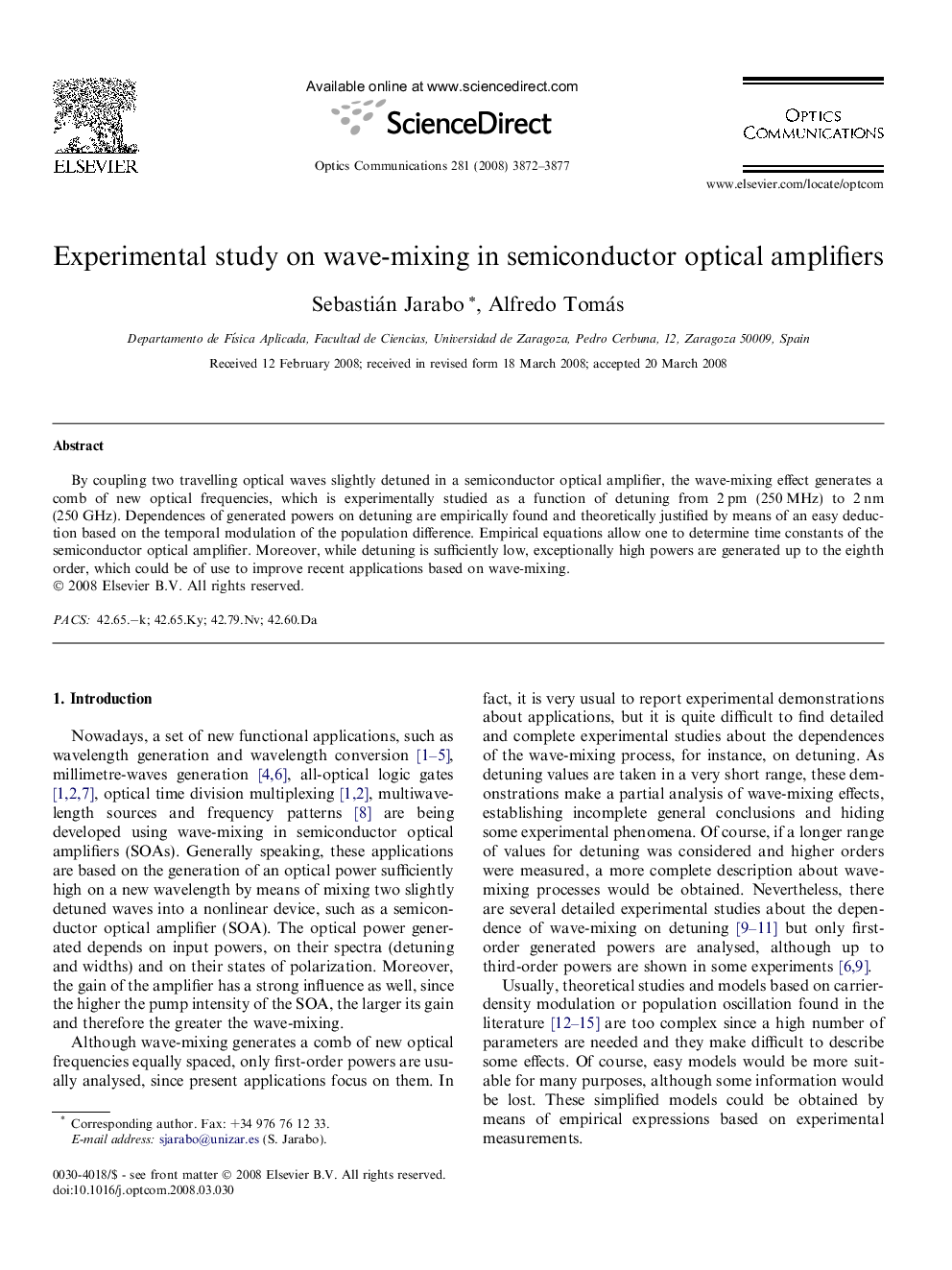| Article ID | Journal | Published Year | Pages | File Type |
|---|---|---|---|---|
| 1541077 | Optics Communications | 2008 | 6 Pages |
Abstract
By coupling two travelling optical waves slightly detuned in a semiconductor optical amplifier, the wave-mixing effect generates a comb of new optical frequencies, which is experimentally studied as a function of detuning from 2 pm (250 MHz) to 2 nm (250 GHz). Dependences of generated powers on detuning are empirically found and theoretically justified by means of an easy deduction based on the temporal modulation of the population difference. Empirical equations allow one to determine time constants of the semiconductor optical amplifier. Moreover, while detuning is sufficiently low, exceptionally high powers are generated up to the eighth order, which could be of use to improve recent applications based on wave-mixing.
Related Topics
Physical Sciences and Engineering
Materials Science
Electronic, Optical and Magnetic Materials
Authors
Sebastián Jarabo, Alfredo Tomás,
